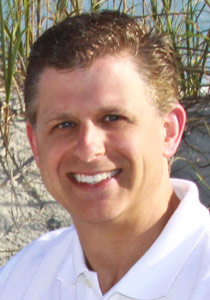 Proper rigging is essential for top performance. If your plane is not properly rigged, the aircraft is fighting against itself in flight. Misaligned control surfaces can induce a lot of drag and the control inputs you use to correct things only make matters worse. Rigging requires special tools (as well as someone well versed in their use). You can certainly check the rigging yourself, but adjusting it back into spec requires the supervision and sign-off of a licensed A&P mechanic. If you haven’t had your aircraft rigged within the last few years, the chances that it’s within specifications are very slim.
Proper rigging is essential for top performance. If your plane is not properly rigged, the aircraft is fighting against itself in flight. Misaligned control surfaces can induce a lot of drag and the control inputs you use to correct things only make matters worse. Rigging requires special tools (as well as someone well versed in their use). You can certainly check the rigging yourself, but adjusting it back into spec requires the supervision and sign-off of a licensed A&P mechanic. If you haven’t had your aircraft rigged within the last few years, the chances that it’s within specifications are very slim.
A properly rigged aircraft should require very little deflection in fixed trim tabs in order to keep the wings level in normal flight. A small amount of rudder trim tab is ok. However, if you find that the aircraft requires significant aileron trim to fly hands-off, something is probably amiss.
Your rigging check should include the fixed airframe, as well as all of the control surfaces. Checking the rigging of the fixed portion of the airframe includes proper wing geometry, incidence checks, etc. Some of these checks are very simple. For example; attach a piece of string to the leading edge of your right wing tip. Bring it out to a point in front of the cowl and draw an arc on the ground at the limit of the string length in front of the aircraft. Now do the same thing from your left wing tip. The arcs should intersect exactly at the center in front of the aircraft. If they don’t, it may be time to re-evaluate that “minor damage repaired” note in your log books from the previous owner.
Once you know that the basic structure of the airframe is in proper alignment, it’s time to rig the control surfaces. Ailerons are the obvious first stop when looking for issues since it’s quite easy to have one aileron fighting the other in flight. The flaps should be your next stop. If you talk to folks involved in aircraft racing, you’ll find that some aircraft flaps can be set with a slight “reflex” up, which helps to reduce drag in cruise. Maule aircraft include this feature in their design to increase cruise speed, while still allowing the aircraft to be a stellar short-field performer. Keep in mind that the aircraft must be within the allowable specs for each control surface to remain airworthy, so stay within the specs and don’t become a test pilot.
Note that when setting the proper rigging for flaps, it is important to carefully review the manufacturer’s rigging instructions. Many aircraft flaps have a little play in them, and you need to set their position for flight, not ground conditions. This may mean putting slight upward pressure on the flaps before taking any angle measurements.
When you’re done with the airframe, don’t forget the engine. Aircraft engine alignment is very important to ensure that the propeller is pulling the aircraft in exactly the right direction. This is often not exactly straight ahead, as mounts are typically designed to aid in reducing the effects of engine torque on flight characteristics. The position of the engine can usually be adjusted by means of adding or removing spacers at the engine mounts. You may be surprised how much of a difference this can make. However, before making any changes, be sure to also look for the underlying root of the problem. It could be worn mounts or even damage to the mounting structure itself.
Once you’ve completed these two steps, you’ve done about all you can through adjustment and cleanup. Next time, we’ll call in the “mod squad” and see what the market can offer you to improve upon that “factory stock” bird performance.
 Jeff Simon is an A&P mechanic, pilot, and aircraft owner. He has spent the last 14 years promoting owner-assisted aircraft maintenance as a columnist for several major aviation publications and through his how-to DVD series: The Educated Owner. Jeff is also the creator of SocialFlight, the free mobile app and website that maps more than 5,000 aviation events. Free apps available for iPhone, iPad, and Android, and on the Web at www.SocialFlight.com.
Jeff Simon is an A&P mechanic, pilot, and aircraft owner. He has spent the last 14 years promoting owner-assisted aircraft maintenance as a columnist for several major aviation publications and through his how-to DVD series: The Educated Owner. Jeff is also the creator of SocialFlight, the free mobile app and website that maps more than 5,000 aviation events. Free apps available for iPhone, iPad, and Android, and on the Web at www.SocialFlight.com.


